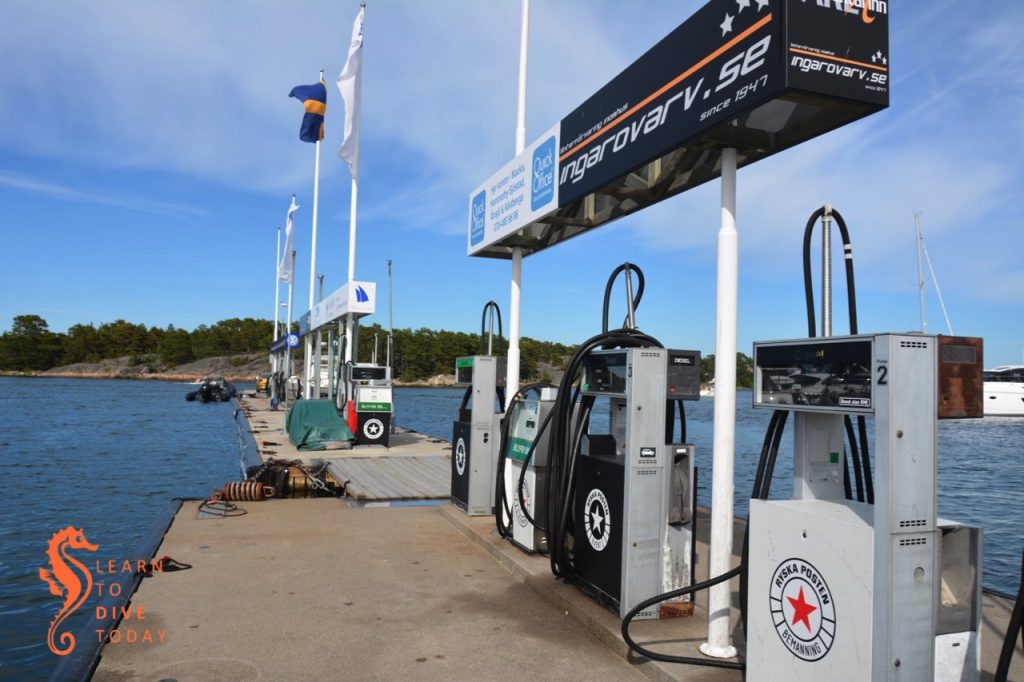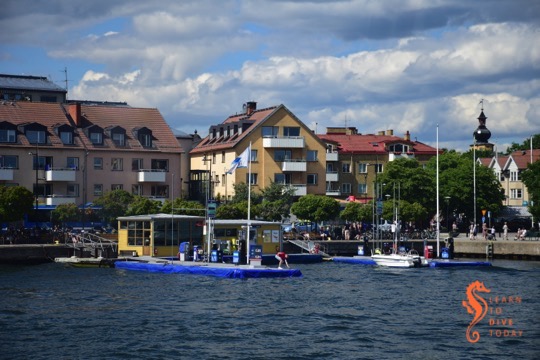I never got around to sharing some of the maritime components of the trip Tony and I made to Sweden (for adventure) and Denmark (for family) in July-August of last year. I trust you will indulge me as I intersperse these recollections with our (not always so) regular programming.
When I do trip planning I tend to gravitate towards attractions and places that have something to do with maritime history and the marine environment – these subjects tend to make both of us happy. I became obsessed with visiting the Vasa Museum a few years ago, and when the opportunity arose to route our travels through Stockholm, I made it our first priority on our first full day in the city. If I had to provide a single reason for why we went to Stockholm, the Vasa might be it.

The Vasa was a Swedish warship that sank on her maiden voyage, within a stone’s throw of land and inside the collection of islands that makes up Stockholm, in the summer of 1628. She went down suddenly and quickly, and was lost until the 1950s, when the wreck was discovered in 32 metres of water in brackish Lake Malaren, just outside the harbour of Stockholm. The lake is connected to the sea, but the water is not salty enough to accommodate shipworms (Teredo navalis), and the absence of this wood-muncher contributed to Vasa‘s preservation. An extensive salvage effort culminated in 1961, and in 1988 the ship was moved to a dedicated museum on the island of Djurgården. The masts on the outside of the museum building aren’t original, but they show the height to which Vasa‘s actual masts would have reached.

Both the story of the Vasa‘s construction and sinking, and of her recovery and preservation, are remarkable. (I’ll leave you to discover why she sank.) I did a guided tour of the museum which provided some colour regarding the ship’s history before walking around on my own, but Tony preferred to explore independently from the beginning. The salvage process is well documented, as is life on board, characterised by some grim realities!

A team of engineers works constantly to preserve the ship, which is closely monitored for structural and chemical changes, and kept in a strictly climate-controlled environment. The fruits of their research have assisted in the preservation of other historical vessels such as the Mary Rose in Portsmouth, and the parts of the exhibit related to the preservation of Vasa are fascinating in and of themselves.

I can’t adequately convey what it was like to walk into the museum for the first time and see a full-sized 17th century wooden warship right in front of us. Vasa is colossal, and breathtaking. So much of what I know about what life was like centuries ago has to be supplemented by imaginative reconstruction of things I’ve never seen before (like a wooden warship), or ambitious mental deletions of the industrial and agrarian features of almost all the landscapes one interacts with in developed countries. Seeing the Vasa was like a smack in the face from the past. Most of my photos are no good, because you’re so close to the damn thing, and it’s so enormous, that cameras just don’t do it justice. But your eyes do. If you’re anywhere remotely near Stockholm, get thee to the Vasa Museum. I promise you won’t regret it.












